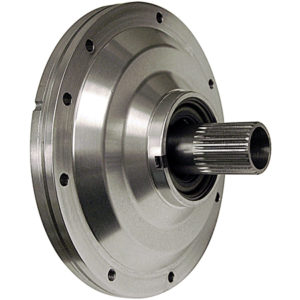Gestión de Compras has the facilities to design and manufacture any part made by Gravity Casting.
Process of Gravity casting
Gravity casting, or casting in permanent molds, is widely used for the manufacture of castings parts made of non-ferrous alloys such as aluminum, copper, magnesium or zinc. For this type of casting, metal is poured at atmospheric pressure in a permanent mold (which is not destroyed) made from two machined steel blocks and the cavity, will form the final part.
Gravity casting, or casting in permanent molds, is widely used for the manufacture of castings parts made of non-ferrous alloys such as aluminum, copper, magnesium or zinc. For this type of casting, metal is poured at atmospheric pressure in a permanent mold (which is not destroyed) made from two machined steel blocks and the cavity, will form the final part.
Higher precision
Unlike sand moulds, the metal molds are not porous so, explicit venting passages are required for allowing the air inside the mould to escape during filling. Coatings of graphite in a suitable carrier are applied to the mould to minimize thermal shock to the mold and reduce the solidification rate of casting.
The first casting is poured with the mold at room temperature but the temperature of the mold gradually rises after each cycle, and stabilizes after few cycles. The tool design and process parameters must therefore be designed for a higher temperature of the mold.
The gravity casting can produce complex parts, sometimes with cavity or pin hole thanks to sand cores or metal pins. Also, it is suitable for small to medium size castings having fairly uniform wall thickness, with no or few undercuts. The metal mould enables better dimensional stability and surface finish compared to sand casting.

Materials and Products
This process is allow to work with non-ferrous materials as aluminium, copper, magnesium or zinc alloys because permanent mold usually are made with iron or steel. However we can manufacture with irons and steels using graphite molds.
By gravity casting can be produced a big quantity of pieces with a high quality at low cost, for these reasons this process is commonly used for automotive parts but besides, it is used for manufacture industrial equipment, parts for power transmission, casings of any kind, for cable rope hubs… Some parts manufactured by this process are engine brackets, intake pipes, valve bodies, actuator bodies, cylinder heads, junction boxes, knuckles, impellers, brake calipers, compressor parts, torque rod, flanges, manifolds, housings, covers, electrical fittings parts…
Tolerances
Typical tolerances on permanent mold casting are 0.4 mm for the first 25 mm (0.015 in for the first inch) and 0.02 mm for each additional centimetre, always being adjusted to the design specifications.
Standard and certificates
Gestión de Compras only works with companies that can provide us warranties, which are holders of all necessary quality certificates and work according to all specific industry standards such as:
- ISO9001, TS16949 and ISO 14001
- QS9000, AS9100
- DIN 4766 for Surface roughness
- ISO 8062, ISO 286-2, DIN 2768, DIN 1697, ect. for dimensional tolerances




